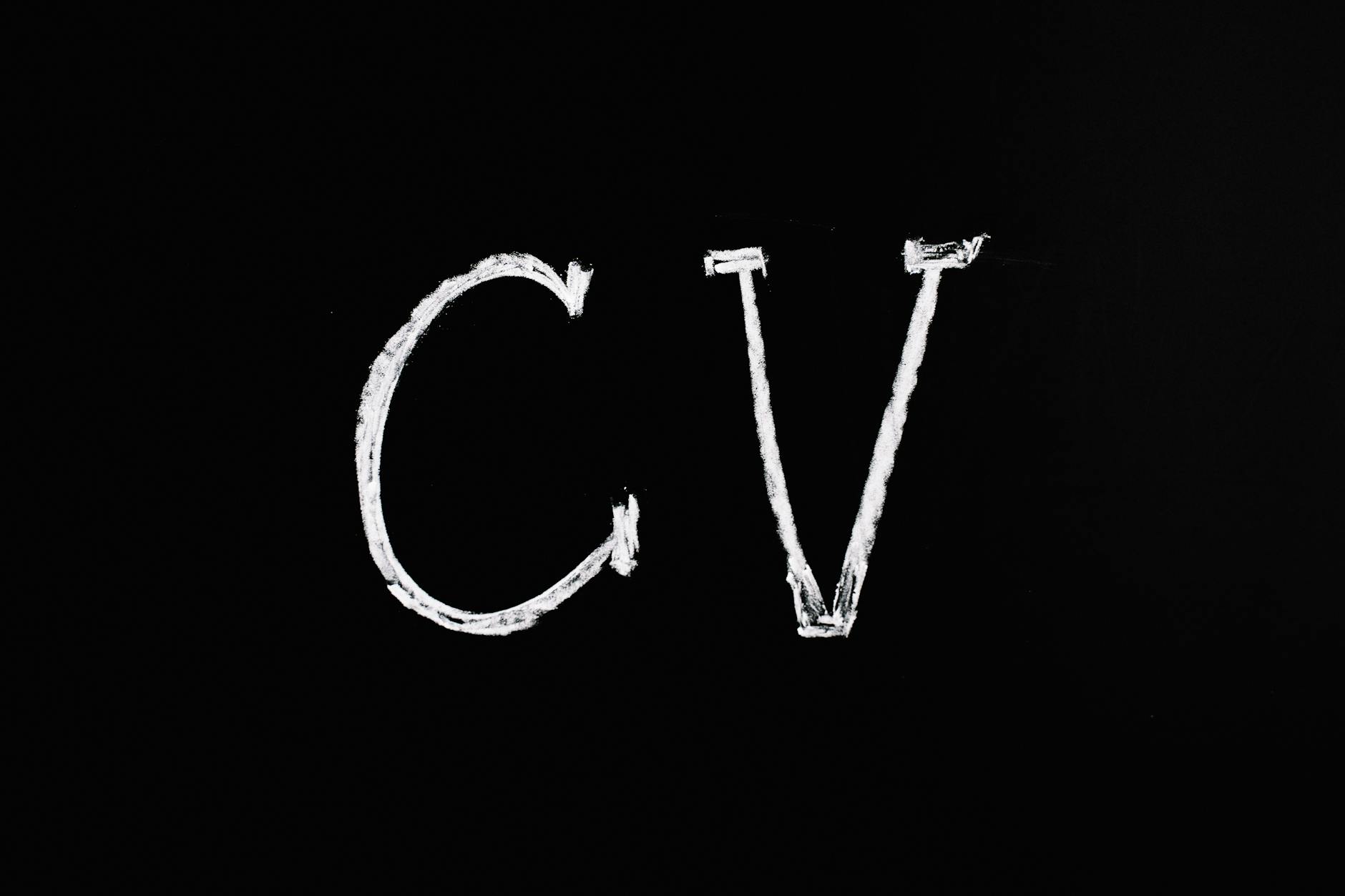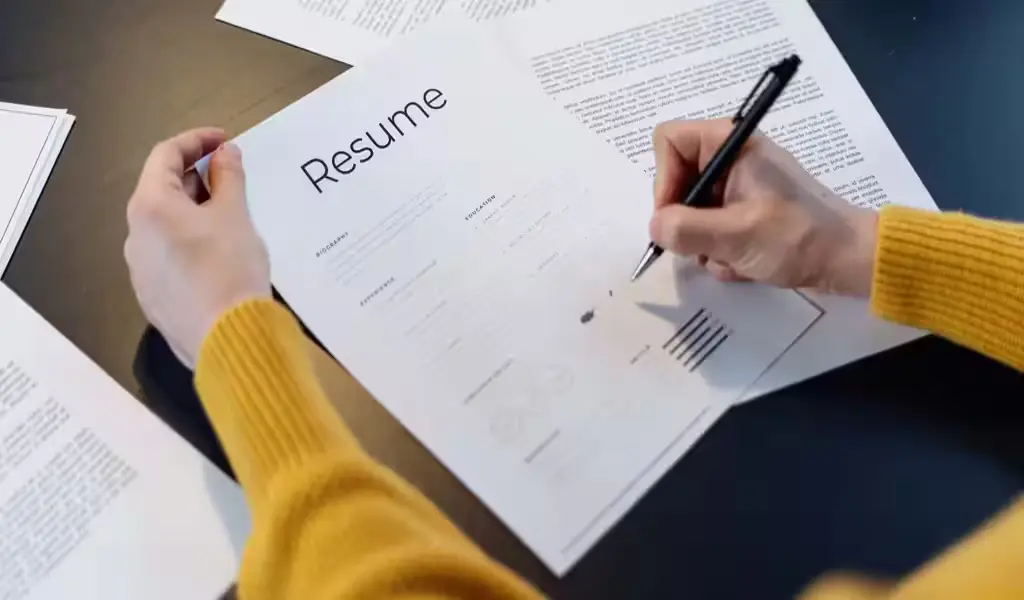Top 20 Skills to Put on Your Resume in 2025 – If you’ve sent out a bunch of applications and haven’t heard back, you’re not alone.
Job seekers in 2025 face more competition than ever, and your resume needs to do more than just list past jobs. The right skills can push you past software filters and catch the eye of real people.
In fact, about 75% of resumes get filtered out by applicant tracking systems (ATS) that scan for skill keywords before a human ever sees them.
You’re probably asking yourself about the 10 best skills to put on your resume (with examples and FAQ).
This guide actually goes a step further by highlighting 20 top skills employers look for right now, split between must-have soft skills and valuable hard skills.
Why stop at ten and risk looking the same as everyone else? Listing the right skills can help your resume match the job perfectly and make you stand out.
We’ll break down which skills matter, how to describe them clearly (with real-world examples), and offer practical advice for adding them to your resume.
If you want to improve your chances in today’s job market, knowing how to pick and present these skills is essential. For even more strategies, check out these Job hunting tips in the USA, especially if you’re targeting US-based employers.
By the end of this introduction, you’ll know why skills matter, how the 10 best skills to put on your resume can give you a real edge, and what else you need to do to move your application to the top of the pile.
Let’s start with the basics of what skills employers really expect from candidates today.
Why Include Skills on Your Resume

Your resume is more than a work summary—it’s your personal highlight reel for hiring managers and Applicant Tracking Systems (ATS). Including skills directly on your resume isn’t optional anymore.
In 2025, most companies use keyword scanning software as the first step in their hiring process. This means your resume could get skipped before a human ever reads it if you don’t have the right skills listed.
Think of your skills section as your best chance to match the job description and get noticed fast.
When you add the 10 best skills to put on your resume (with examples and FAQ) you send a clear message that you’re a strong fit, both technically and personally.
Skills listed on a resume help employers quickly spot what makes you unique, and they’re just as important as your job history or education.
Whether you’re applying to a big company or a startup, showing relevant and current skills can boost your odds of moving ahead in the hiring process. To dig deeper into which specific skills matter, check this guide to the best resume skills and examples.
Hard Skills vs Soft Skills: Break Down Differences with Simple Examples
Let’s keep things simple. Hard skills are the teachable, specific abilities you pick up through training, classes, or on the job. If you’re a developer, knowing Python or JavaScript is a hard skill.
For a graphic designer, using Photoshop and Illustrator counts. These skills are easy for both humans and robots to spot on a resume, and they’re often what applicant tracking systems search for first.
Soft skills, on the other hand, are the personal strengths that help you work well with others and handle challenges. Think problem-solving, teamwork, communication, or adaptability.
Take problem-solving: whether you’re in retail or tech, being able to work through unexpected issues is a valuable asset. Employers love to see these because technical know-how doesn’t always mean someone is a good coworker or can learn on the fly.
Both types of skills pass resume scans, but soft skills often shine during interviews when you talk through real-life scenarios.
The best approach? Balance both on your resume. Sprinkle hard skills that match the job requirements, then add a handful of soft skills to show you’re well-rounded and ready for any team.
For more in-depth tips on matching hard and soft skills with job postings, check resources like this FlexJobs list of the best skills for your resume. Including a good mix positions you as a top candidate, no matter what the role.
Top 10 Soft Skills Employers Want
Soft skills are often the reason one candidate stands out over another in a crowded job market. For 2025, employers are searching for professionals who not only have technical know-how but can also work well with others, handle changes, and solve everyday challenges.
The most valuable soft skills make your daily work smoother and help teams reach goals faster. Here’s how the top five soft skills shape your workplace success and why the 10 Best Skills To Put On Your Resume (With Examples and FAQ) should always focus on these essentials.
Communication Skills: Show How Clear Emails or Presentations Build Trust
Employers list communication right at the top. Whether you’re writing an email, leading a meeting, or just updating Slack, clear messages prevent mistakes and help everyone get on the same page. When you list communication on your resume, give examples that show results.
Example statement: Wrote reports that helped team meet deadlines.
This example focuses on two things: delivering information clearly and making work easier for others. Every workplace relies on people who can get their point across, answer questions quickly, and listen well. Communication is the glue that holds any company together.
Most jobs require it every day, so hiring managers look for it as a must-have skill. Check out this guide covering top soft skills for modern resumes for even more ways to describe communication.
Quick tip:
- Add numbers or outcomes when sharing communication wins on your resume for extra impact.
Teamwork and Collaboration: Highlight Group Projects
Good teamwork sets strong employees apart. In today’s world, few projects get done solo. If you can work with others, you bring value to the whole team. It’s even more important as remote work grows—tools like Slack, Asana, and Zoom make group projects common.
Example statement: Worked with five colleagues to launch a product on time.
When describing teamwork, use real situations where you pitched in, listened, or combined ideas to reach a goal. Many companies now look at how well you use digital tools to connect with others, especially with teammates across different time zones.
Want to see how others highlight their teamwork skills? This soft skills breakdown for job seekers features examples and trends that catch HR’s eye.
Remember:
- Employers notice candidates who mention collaboration clearly, especially in diverse or tech-driven teams.
Problem-Solving Abilities: Describe Fixing Issues
Solving problems is more than just putting out fires—it’s about seeing issues early and thinking through smart fixes. Employers want people who make their workdays easier and keep projects moving forward.
Example statement: Fixed budget overrun by renegotiating vendor contracts.
Always share the outcome. Did you reduce costs, improve customer reviews, or cut down delays? Results matter.
Problem-solving is high on the list of the 10 Best Skills To Put On Your Resume (With Examples and FAQ) because it shows you can think on your feet and handle what comes at you. Find more ways to describe this skill at Jobscan’s list of soft skill examples.
Tip:
- Connect your actions to a result. Employers value stories, but results stick in their memory.
Adaptability in Changing Environments: Talk About Handling Shifts Like New Tech
If the past few years have taught us anything, it’s that change is constant. Adaptability is key for staying steady when things get shaken up, like when a team switches to remote work or adopts new software.
Example statement: Switched to remote setup during pandemic without missing targets.
Adaptable people show they can stay positive, learn fast, and keep things moving during shifts. Employers in 2025 want people who don’t just wait for instructions but react to new situations and tech with a “let’s try it” mindset. For an in-depth view, check out this roundup on essential soft skills for resumes in 2025.
Act like a Swiss Army knife:
- The more situations you can handle, the more valuable you are to your next boss.
Time Management Techniques: Explain Prioritizing Tasks
With constant deadlines and task lists, time management is the skill that keeps you on track. Whether you’re juggling multiple projects or prioritizing what matters most, good time management helps you get more done without the stress.
Example statement: Used calendars to handle multiple deadlines, boosting output by 15%.
This could be as simple as blocking time for deep work, using project management apps, or learning when to say “no” or ask for help. Time management keeps you and your team from dropping the ball, which is why it’s always on employer Wishlist.
For specific, actionable tips, check out the full list of the most in-demand soft skills for 2025.
Shortcut:
- Show how you organize, prioritize, or automate daily work with simple tools or schedules.
Including these soft skills on your resume and pairing them with real examples answers the “why should we hire you?” question before you even walk through the door.
Top 10 Hard Skills for Modern Jobs
Modern employers want people with proven technical skills—those you can show on paper, back up in interviews, and use on the job from day one. With tech growing in every field, hard skills like data analysis and coding no longer belong only to programmers.
The best resumes for 2025 show off a mix of practical know-how that makes a real difference at work. If you want your resume to top the pile, these are the 10 Best Skills To Put On Your Resume (With Examples and FAQ) that hiring managers expect to see.
Below, you’ll find top-rated hard skills built for today’s toughest, highest-paying jobs, plus examples you can use or adapt.
Data Analysis Proficiency

Digging into numbers is now a must for business roles. Using tools like Excel or Google Sheets lets you track trends, spot problems, and make smarter decisions. Companies expect you to pull real value from data, not just stare at spreadsheets.
- Example to use on your resume:
Created dashboards showing key metrics for decisions.
Why it matters:
Businesses run on what the numbers say. Tracking costs, sales, or customer feedback in a crisp dashboard makes you the go-to person for insights.
According to the World Economic Forum Future of Jobs Report 2025, data skills are rising fast as companies get flooded with information.
Not only do you show you’re analytical, but you also prove you can communicate results in a way everyone understands. If you want a high-income skill that opens doors across many jobs, data analysis is it.
More info on using analysis to boost your pay and promotions is at Coursera’s guide to high-income skills.
Programming with Python
Python is the Swiss Army knife of programming. Whether you’re coding basic apps, creating tools to speed up your work, or even crunching numbers for marketing, Python covers it. You don’t have to be a developer to benefit—basic programming gives you power over routine tasks and data.
-
Example for your resume:
Built scripts to automate reports, saving hours weekly.
Why it matters:
Python is simple to read and use, so it fits right into jobs in tech, finance, research, and marketing. By showing you can automate reports or processes, you prove you’re efficient and comfortable with new tools.
Firms always look for hires who solve problems with code, not just paperwork. See more about this skill and others in the Deel roundup of future-proof hard skills.
SQL for Database Management
If data is gold, SQL is the pickaxe. SQL (Structured Query Language) is the tool companies use to pull, sort, and update information tucked away in their databases. Learning just the basics lets you grab customer lists, analyze sales, or check inventory without waiting on IT.
- Example for your resume:
Wrote queries to pull customer info, improving service speed.
Why it matters:
Databases run almost every modern business, from hospitals to online shops. SQL helps you get answers fast so you can make better calls and keep customers happy.
Even a handful of well-written queries on your resume shows you’re never afraid to dig into raw data. Find more ideas in this complete guide to hard skills for your resume.
SEO and Digital Marketing
Online visibility can decide who wins or loses in business. SEO (Search Engine Optimization) means adjusting web content so it shows up higher in search results. As more companies rely on online leads, knowing how to boost search rankings, plan good keywords, or use social ads is almost a ticket to steady work.
- Example for your resume:
Improved site traffic 30% with keyword strategies.
Why it matters:
With the right SEO technique, you help businesses find the customers they want—and help customers find them. Digital ads, content marketing, and keyword research are a fast route to results. Employers want to know you understand traffic and analytics, as highlighted in the Extern list of top skills for early-career professionals.
Agile Project Management
Projects move fast, and nobody wants to wait for slow, outdated methods. Agile means breaking work into short “sprints” and using tools like Trello or Jira to keep teams on track. This isn’t just for software teams—marketing, HR, and even health care are jumping on board.
- Example for your resume:
Led sprints to deliver features early.
Why it matters:
Agile helps teams set clear goals, check progress, and adapt if plans change. Employers want proof that you can collaborate, prioritize, and deliver.
Adding Agile to your resume tells managers you’re organized, flexible, and ready to keep up. See how you can present project management and tech know-how together in the Hloom’s updated hard skills list.
These hard skills form the backbone of high-performing teams and show you’re ready for modern challenges. Looking for even more in-demand skills and how to display them for top jobs (like those at NASA)?
Take a look at this detailed NASA career guide for 2025. They break down exactly what top employers want right now.
The key is to pair each of these hard skills with a concrete example—don’t just list “Python” or “Excel”; show the results of using them.
That’s what makes you stand out, both to resume bots and to the real people deciding who comes in for an interview.
How to List Skills on Your Resume Effectively
When you want to stand out, the skills section is where you show you can actually do the job. It’s your quick read on what you bring to the table. The right mix of hard and soft skills helps you pass through ATS filters and catch a human’s eye.
In this section, you’ll find practical ways to present skills so they align with what employers are hiring for. We’ll also connect you with solid examples and reliable resources to back up your choices.
Tailoring Skills to the Job: Stress matching keywords from postings
A smart resume directly reflects the language and needs of each job posting you respond to. Companies use applicant tracking software that scans resumes for precise keywords.
If you use the same wording as the original job ad, your resume is far more likely to make it through the initial filter and catch a hiring manager’s attention.
First, carefully read the job description and note every skill they mention, both hard and soft. Copy the key phrases they use, provided you can genuinely show that ability.
Let’s say the listing asks for “Excel” skills and even calls out “pivot tables” and “data visualization.” Don’t just put “Excel” on your skills list. Go deeper. List “Advanced Excel, pivot tables, and dashboards.” Then, take one step further by showing a real result:
- Advanced Excel with pivot tables; created reporting dashboards that cut weekly report time by 40%.
This not only matches their keywords but tells a story about your actual results.
You can use this method for both technical and people skills.
For more guidance and specific examples, see 10 Best Skills To Put On Your Resume (With Examples and FAQ), which lays out skills employers rank highly for 2025.
Integrating Soft Skills: Concrete examples beat generic phrases
Soft skills shape how you handle people and projects, but too many resumes list these in a vague way. Swap “team player” or “good with people” for a brief, specific story. For instance:
- Led daily huddles that improved deadline completion by 15%.
Pick one or two stories like these that tie back to the job you want. This move works especially well for roles where soft skills like teamwork, leadership, or communication are named as requirements.
When you highlight results, it helps your abilities stand out in a stack of applications. For more on how to describe these strengths, FlexJobs offers a robust list of in-demand soft skills, with action-based examples to spark ideas for your own section.
Presenting Hard Skills: Show you can deliver with tools and tech
Hard skills cover your technical know-how—what you can do, not just talk about. For each job, put the most relevant tech skills at the top of your list. If the posting asks for SQL, list it first. Add details about your experience and, where possible, connect a result:
- SQL: Built queries to automate 3 common reports, reducing manual work by 12 hours monthly.
Be direct. If you know a language, software, or technique well enough to discuss or demonstrate, put it on your resume exactly as the employer requests. This clarity helps your resume score high with ATS and, just as important, make sense to the real person reviewing applications. Check out this helpful breakdown for a range of solid technical skill examples: Essential Resume Skills: Examples for Any Job.
How to Structure the Skills Section: A clean, scannable format
Your skills section should be as easy to read as a shopping list. Don’t overcomplicate it. Here’s a simple, two-part format that works nearly everywhere:
Option 1:
List by type, usually under “Hard Skills” and “Soft Skills,” using bullet points.
Option 2:
Group by relevance. List the most critical skills for that specific job at the top, followed by others.
Example layout:
| Skill Category | Skills |
|---|---|
| Technical | Advanced Excel, SQL, Python, WordPress |
| Business/People | Project coordination, Communication, Team leadership |
| Tools | Tableau, Jira, Asana, Google Analytics |
Or, just stack relevant keywords together on 1–2 lines if space is tight.
If you want more on format that saves time for recruiters, try this resource with resume skill structuring tips: 10 Essential Resume Skills to Showcase Your Value.
The 10 Best Skills To Put On Your Resume (With Examples and FAQ)
To get real traction, you need a mix of both hard and soft skills, not just one or the other. Base your choices on what makes you stand out for the job—and always attach an outcome or context to prove you can put those skills into action.
That’s why so many guides, like 20 Best Skills to Put on Your Resume (With Examples), stress showing how you’ve used each skill, not simply listing it.
Here’s a tip: read fresh postings for the jobs you want, list the 10 Best Skills To Put On Your Resume (With Examples and FAQ) that match, then back them up with a 6-10 word description or a specific, measurable result. Keep your phrasing simple and direct.
FAQs: Quick answers you can reuse
- How many skills should I list? Aim for just enough to match the requirements and show a bit of range. Six to twelve skills usually hits the sweet spot.
- Should I list specific software by name or just the category? Use both: “Microsoft Excel (pivot tables, data visualization)” works better than just “computer skills”.
- Do I really need to tailor each time? Yes. Tailoring your skills—every single time—is the straightest path past both resume filters and real hiring managers.
If you’re looking for more inspiration, real-life examples, and hands-on advice, check out this extensive resume skills FAQ and guide that highlights current, high-value options and how to present them.
Remember, the focus is helping you move from maybe to must-interview, keeping everything scannable, honest, and ready for the quick screen both software and people will give your resume.
FAQ: Common Questions About Resume Skills
Thinking about which skills to show on your resume can feel overwhelming. You want to hit the sweet spot: enough skills to prove you’re a good fit, but not so many that your strongest ones get lost.
Here’s what matters most when using the advice from the 10 Best Skills To Put On Your Resume (With Examples and FAQ):
focus on what fits the job, offer proof of your abilities, and keep it all clear and easy to scan for both hiring managers and applicant tracking systems.
From industry trends, recruiters now look for skills tailored to the specific job, a clean and simple format, and solid, measurable results. This section breaks down how many skills you should include and if you need examples for each—so your resume gets noticed.
How Many Skills Should I Include?
If you want to make an impact, stick with 10 to 15 skills. Going beyond that can actually hurt you, making it look like you’re spreading yourself too thin.
Recruiters and automated resume screeners (ATS) care more about how well your skills match the job, not how long your list is.
- Start with the essentials: Review the job ad and prioritize the keywords used there.
- Focus on relevance: Pick skills that truly fit the company and role. For example, if you’re eyeing a job in data analysis, shine a light on tools like Python, SQL, and Excel.
- Balance is best: Mix hard skills (the technical stuff like project management software or coding) with soft skills (such as teamwork and communication).
- Avoid padding: Skip outdated or generic skills like “basic computer knowledge” unless the job really asks for it.
If you aren’t sure which skills carry more weight, look at what shows up first in postings for similar jobs or take a peek at in-depth resume skills examples for even more inspiration. Remember, listing more skills doesn’t lead to more interviews. Target what matters most for the specific job.
Do I Need Examples for Each Skill?
Yes. Examples are what take your resume past buzzword territory. By tying each skill to a clear result or a short, specific story, you make your resume believable and memorable.
- Instead of just saying “Project Management,” try, “Led three project teams to hit deadlines, saving 20% on costs.”
- For technical skills, add the outcome: “Built Excel dashboards that reduced manual reporting time by 10 hours each month.”
- Where space is tight, place examples in bullet points under each job or as a skill-specific sub-bullet.
Recruiters rely on these short snapshots to see not just what you know, but how you use it. This is true whether you’re listing communication, adaptability, SQL, or Photoshop.
It’s one reason why resume guides like FlexJobs’ skill examples and MyPerfectResume’s skills breakdown push for actual proof, not just keywords.
To keep your skills ATS-friendly and eye-catching, use clear action verbs and numbers. For example:
- “Coordinated virtual events for teams in four time zones.”
- “Automated reports using Python, saving six hours per week.”
These short achievements quickly show the value you bring. Want more examples? Take a look at this guide to essential resume skills and examples for extra ideas on phrasing and focus.
When you combine a focused skills list with strong, real-world examples, you give both software and human reviewers exactly what they need.
This simple but effective approach matches 2025 job search trends and positions you for more interview calls.
Conclusion
Choosing the right skills makes all the difference when it comes to a standout resume. The 20 skills covered here—split between hard and soft abilities—give you a clear advantage in today’s job market.
If you want results, handpick your strongest skills and match them to each job you apply for.
Using real examples with numbers and simple stories builds instant trust with employers and helps your application pass tough resume filters.
Remember, the right mix opens doors. Start updating your resume today so you can step confidently into fresh opportunities in 2025. What’s your top skill? Drop it in the comments below.
For more advice, check out proven job hunting tips for 2025 in the USA to keep your edge sharp as the job market shifts. Thanks for reading—your next role could be one great resume away.






